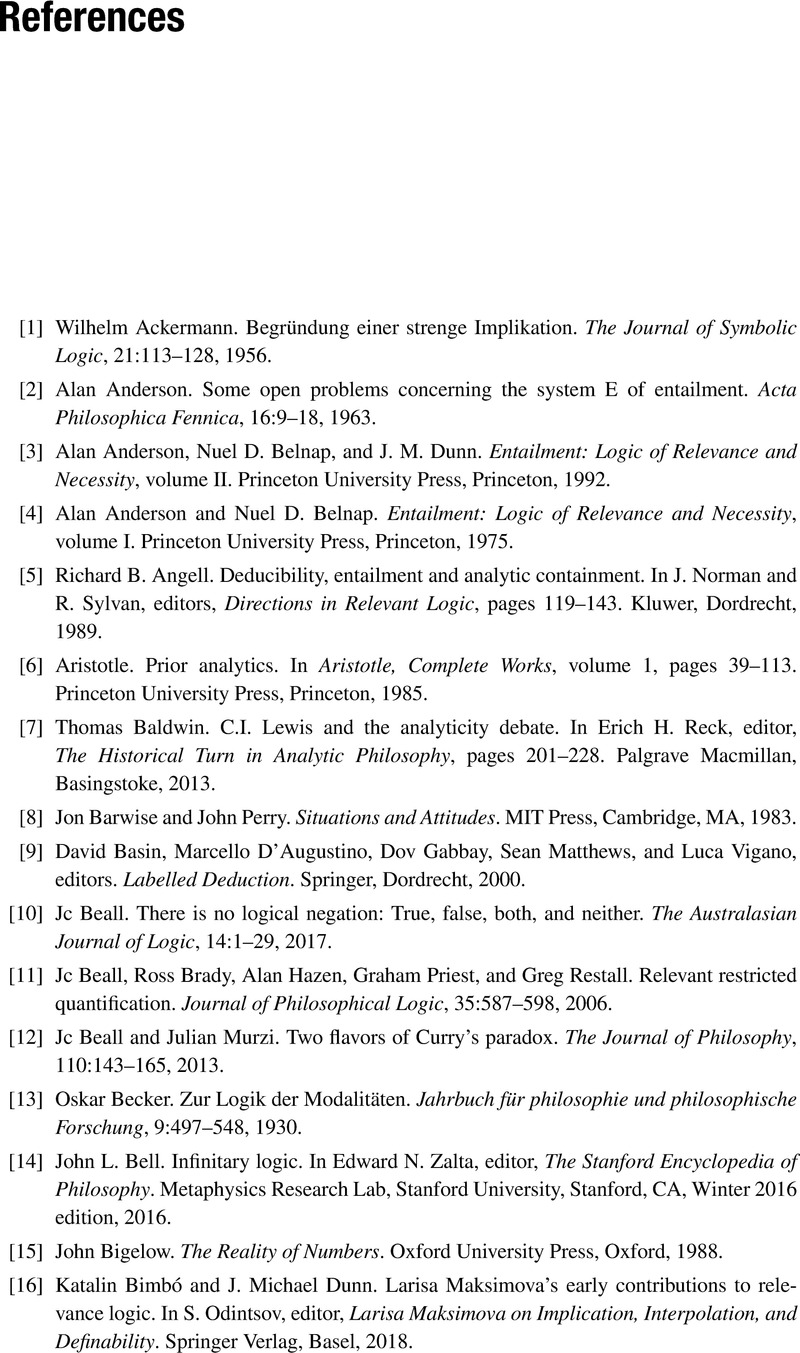Book contents
- Frontmatter
- Dedication
- Contents
- Preface
- Acknowledgements
- Table of Symbols
- 1 Why Entailment?
- Part I Entailment in the Twentieth Century
- 2 C. I. Lewis and His School
- 3 Entailment and Possible Worlds
- 4 Entailment and Relevance
- 5 Reflexivity
- Part II Theories and Entailment
- 6 Theories and Closure
- 7 Theories of Entailment
- Part III The Logic E of Relevant Entailment
- 8 The Logic of Entailment
- 9 Negation and Disjunction
- 10 Quantification
- 11 Entailment and Reasoning
- Appendix Systems, Semantics, and Technical Results
- References
- Index
- References
References
Published online by Cambridge University Press: 08 February 2024
- Frontmatter
- Dedication
- Contents
- Preface
- Acknowledgements
- Table of Symbols
- 1 Why Entailment?
- Part I Entailment in the Twentieth Century
- 2 C. I. Lewis and His School
- 3 Entailment and Possible Worlds
- 4 Entailment and Relevance
- 5 Reflexivity
- Part II Theories and Entailment
- 6 Theories and Closure
- 7 Theories of Entailment
- Part III The Logic E of Relevant Entailment
- 8 The Logic of Entailment
- 9 Negation and Disjunction
- 10 Quantification
- 11 Entailment and Reasoning
- Appendix Systems, Semantics, and Technical Results
- References
- Index
- References
Summary

- Type
- Chapter
- Information
- The Logic of Entailment and its History , pp. 252 - 261Publisher: Cambridge University PressPrint publication year: 2024

